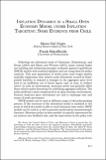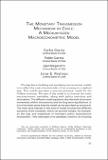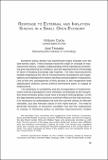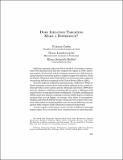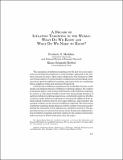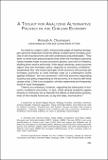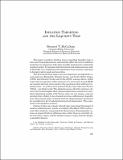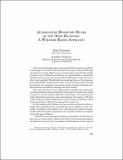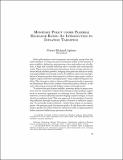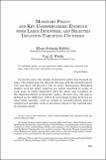Search
Now showing items 21-30 of 57
Inflation dynamics in a small open economy model under inflation targeting: some evidence from Chile
Following the influential work of Christiano, Eichenbaum, and Evans (2005) and Smets and Wouters (2003), many central banks are building and estimating dynamic stochastic general equilibrium (DSGE) models with nominal rigidities and are using them for policy analysis. This new generation of sticky ...
The monetary transmission mechanism in Chile: a medium-sized macroeconometric model
The objective in building and specifying macroeconomic models is to reflect the main characteristics of an economy in a stylized way. This article describes a macroeconometric model for the Chilean economy. The aim of the model is to forecast the main macroeconomic variables, along with policy exercises ...
Response to external and inflation schocks in a small open economy
Monetary policy design has experienced major changes over the last twenty years. These changes had their origin in changes in macroeconomic theory, a better understanding of the importance of achieving and maintaining low inflation, and the abandonment of fixed pegs in favor of floating exchange rate ...
Does inflation targeting make a difference?
Inflation targeting is the new kid on the block of monetary regimes. Since New Zealand and Chile first adopted the regime in 1990, a growing number of industrial and developing countries have followed suit, anchoring their monetary policy to explicit targets for inflation.
A decade of inflation targeting in the world: what do we know and what do we need to know?
The emergence of inflation targeting over the last ten years represents an exciting development in central banks' approach to the conduct of monetary policy. After initial adoption by New Zealand in 1990, a growing number of central banks in industrial and emerging economies have opted for inflation ...
A toolkit for analyzing alternative policies in the chilean economy
As noted by Leeper (1995) “the business pages of leading newspapers give the impression that the effects of alternative monetary policies on the macroeconomy are well understood and predictable.” They tend “to write with great certainty that when the monetary authority raises interest rates it slows ...
Inflation targeting and the liquidity trap
This paper considers whether issues regarding liquidity trap or zero lower bound phenomena substantially affect the case for inflation targeting, in comparison with other possible strategies for conducting monetary policy. It examines both theoretical and empirical issues and, in the latter case, ...
Alternative monetary rules in the open-economy: a welfare-based approach
How do central banks choose among alternative monetary polocies? In this paper we analyze that question for an open economy following an interest rate rule. Many issues remain controversial in the design of such a rule. If inflation is targeted, as it presumably is, should the domestic interest rate ...
Monetary policy under flexible exchange rates: an introduction to inflation targeting
Both policymakers and economists increasingly accept that the main medium- to long-run goal of monetary policy is the pursuit of price stability, defined as maintaining a low and stable rate of inflation. A high and variable inflation rate is socially and economically costly.
Monetary policy and key unobservables: evidence from large industrial and selected inflation-targeting countries
In recent years, the design of monetary policy has focused on gaps—the output gap, the interest rate gap, and the unemployment rate gap have all played a role in policy discussions. Standard models used for policy analysis are either specified in terms of such gaps or imply important roles for these ...

